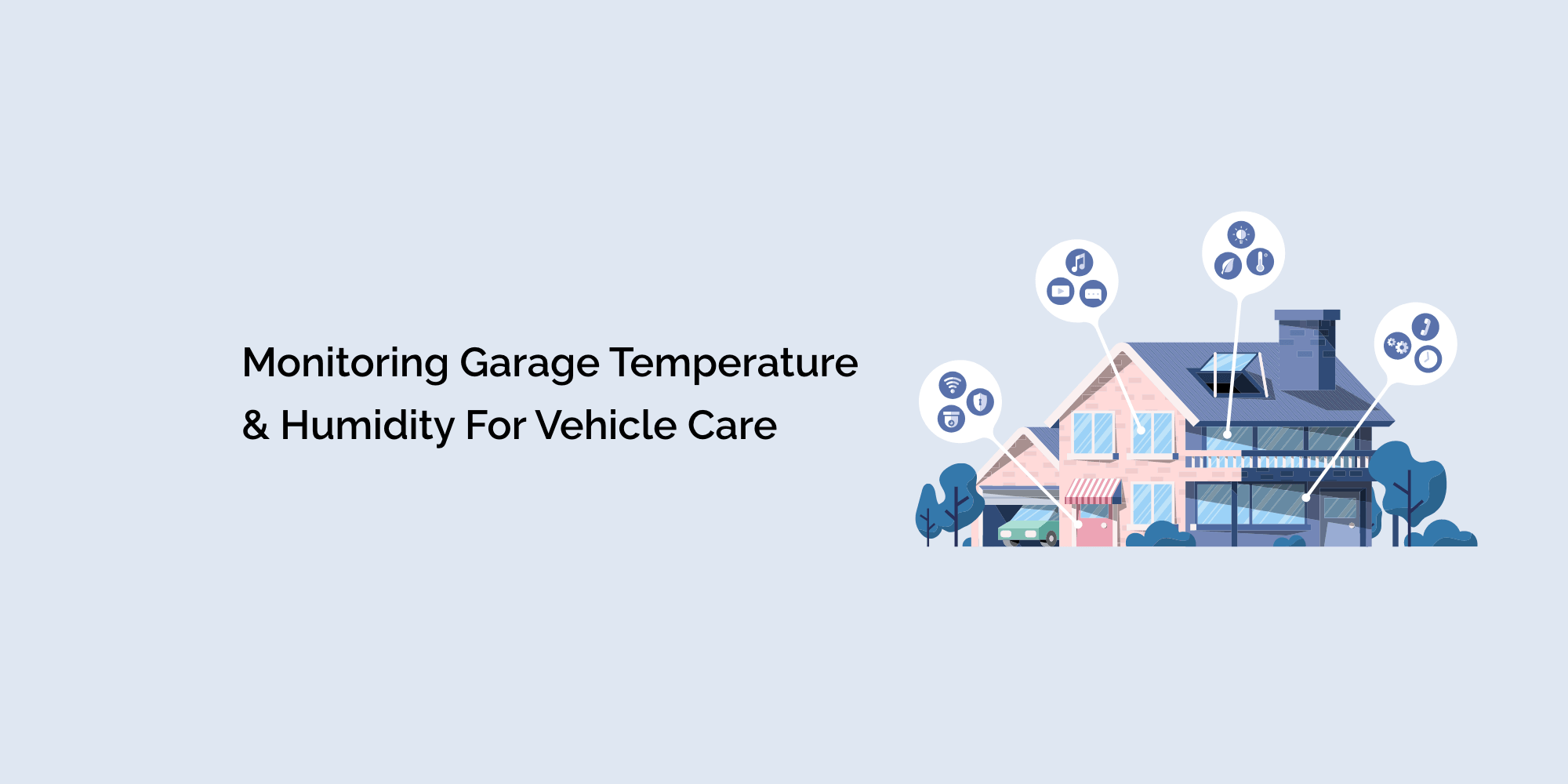When it comes to caring for our vehicles, we often focus on regular maintenance, proper cleaning, and safe driving practices. However, one aspect that is often overlooked is the importance of monitoring garage temperature and humidity. The environment in which your vehicle is stored can significantly impact its condition, longevity, and performance.
In this blog, we will explore the significance of monitoring garage temperature and humidity for vehicle care and provide practical tips to ensure an optimal storage environment.
The Impact of Temperature on Vehicles
Temperature fluctuations can have a considerable effect on various components of your vehicle. Extreme heat or cold can accelerate the aging process, cause deterioration, and impact the overall performance of your car. Here are some key areas affected by temperature:
a) Battery:
High temperatures can accelerate the chemical reactions within the battery, leading to reduced capacity and a shorter lifespan. Conversely, extremely cold temperatures can impede the battery's ability to generate power.
b) Fluids:
Extreme temperatures can affect the viscosity of fluids such as engine oil, transmission fluid, and coolant. This can impact their lubricating properties and hinder their ability to perform optimally.
c) Tires:
Heat can cause tires to deteriorate faster, leading to faster tread wear and potential blowouts. Cold temperatures can reduce tire pressure, affecting traction and fuel efficiency.
d) Interior:
Prolonged exposure to high temperatures can cause damage to the dashboard, upholstery, and other interior components, leading to fading, cracking, and warping.
By monitoring and maintaining an appropriate garage temperature, you can mitigate these risks and extend the lifespan of your vehicle.
The Role of Humidity in Vehicle Preservation
Humidity levels within the garage also play a significant role in vehicle care. Excessive moisture in the air can lead to the following issues:
a) Rust and corrosion:
High humidity can cause metal components to rust and corrode. This can impact the structural integrity of the vehicle, particularly in vulnerable areas such as the undercarriage and exposed metal parts.
b) Mold and mildew:
Moisture can promote the growth of mold and mildew, which can lead to unpleasant odors, stains, and damage to the interior upholstery and carpeting.
c) Electrical system damage:
Excessive moisture can affect the vehicle's electrical system, leading to issues such as short circuits and malfunctioning components.
To protect your vehicle from these problems, it is crucial to maintain optimal humidity levels within your garage.
Monitoring Garage Temperature and Humidity
To effectively monitor garage temperature and humidity, consider the following measures:
a) Use a digital thermometer and hygrometer:
Install a digital thermometer and hygrometer in your garage to monitor temperature and humidity levels accurately. Place them in a central location away from direct sunlight and heat sources for accurate readings.
b) Set temperature and humidity ranges:
Research the recommended temperature and humidity ranges for vehicle storage. Generally, a temperature range of 50-80°F (10-27°C) and a humidity range of 30-50% are ideal for most vehicles.
c) Regularly check and record readings:
Make it a habit to check the temperature and humidity readings in your garage regularly. Keep a log to identify any trends or patterns and track changes over time.
d) Take corrective actions:
If the temperature or humidity levels exceed the desired range, take appropriate measures to adjust them. For high temperatures, consider using insulation, ventilation, or even air conditioning. Dehumidifiers and proper ventilation can help control excessive humidity levels.
Additional Tips for Vehicle Care in the Garage
In addition to monitoring temperature and humidity, consider implementing the following tips to enhance vehicle care in your garage:
a) Regular cleaning and detailing:
Keeping your vehicle clean and regularly applying wax or protective coatings can help shield it from environmental contaminants and UV damage. This includes washing the exterior, vacuuming the interior, and using appropriate cleaners for different surfaces.
b) Use a car cover:
Investing in a high-quality car cover can provide an extra layer of protection against dust, dirt, and moisture. Ensure that the cover fits properly and is breathable to prevent the buildup of condensation.
c) Maintain proper tire pressure:
Check your tire pressure regularly and inflate them to the recommended levels. Properly inflated tires not only improve safety and handling but also reduce the risk of tire damage and premature wear.
d) Start the engine periodically:
If your vehicle will be stored for an extended period, consider starting the engine every few weeks and letting it run for a few minutes. This helps lubricate the engine components and prevents seals from drying out.
e) Fuel stabilization:
If you anticipate long-term storage or non-usage of your vehicle, consider adding a fuel stabilizer to the gas tank. This helps prevent the fuel from deteriorating and causing issues such as clogged fuel lines or carburetor problems.
f) Maintain proper ventilation:
Ensure that your garage has adequate ventilation to promote air circulation and prevent the buildup of stale air or excessive humidity. Open windows or use fans to improve airflow, especially during periods of high humidity.
g) Inspect for leaks and pests:
Regularly inspect your garage for any signs of water leaks or pest infestation. Address any leaks promptly to prevent water damage, and take necessary measures to keep pests away from your vehicle.
Conclusion
Monitoring garage temperature and humidity is crucial for effective vehicle care. Temperature fluctuations can impact various components, while excessive humidity can lead to rust, corrosion, and mold growth. By using digital thermometers, hygrometers, and following recommended temperature and humidity ranges, you can create an optimal storage environment for your vehicle.
Additionally, implementing additional care tips such as regular cleaning, using a car cover, maintaining tire pressure, and periodic engine start-ups will further safeguard your vehicle's condition. By prioritizing garage temperature and humidity monitoring and implementing preventive measures, you can ensure that your vehicle remains in optimal condition, ready for your next adventure on the road.








